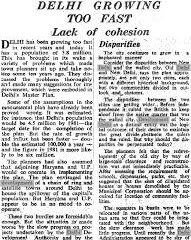Current Trends in the Canadian Economy: 2023 Overview

Introduction
The Canadian economy is a diverse and intricate system that plays a significant role both domestically and globally. As of 2023, understanding the current state of the economy is crucial for policymakers, business leaders, and the general public as it influences employment, investment, and overall quality of life. Recent reports indicate a mixed recovery trajectory following the disruptions caused by the COVID-19 pandemic, making this analysis relevant for stakeholders at all levels.
Current Economic Indicators
According to the Bank of Canada, the annual inflation rate has moderated to approximately 3.2%, down from the highs experienced during the previous year. This decline is a positive sign indicating the effectiveness of monetary policy adjustments. However, inflation remains above the Bank’s target of 2%, prompting continued vigilance.
The Canadian employment rate has seen a rebound, reaching a 5.1% unemployment rate as of mid-2023, showcasing an increase in job availability across various sectors. The labor market has particularly flourished in technology and renewable energy sectors, reflecting a shift towards more sustainable economic activities.
Key Economic Drivers
Natural resources continue to be a cornerstone of the Canadian economy, with oil and gas prices stabilizing after previous fluctuations. Canada remains one of the largest oil exporters in the world, and with global energy demands rising, the energy sector is expected to sustain economic growth. The development of green energy initiatives further emphasizes Canada’s commitment to balancing economic growth with environmental sustainability.
Moreover, the technology sector has emerged as a significant growth area, with investments in artificial intelligence and information technology innovations driving economic expansion. Cities like Toronto and Vancouver are becoming hubs for tech startups, attracting talent and investment both nationally and internationally.
Challenges Ahead
Despite the optimistic outlook, challenges persist. Supply chain disruptions continue to pose risks to economic stability, with global commodity prices remaining volatile. Additionally, the ongoing housing crisis in major urban areas presents affordability issues for many Canadians, prompting calls for governmental interventions.
Conclusion
The current state of the Canadian economy in 2023 reflects a period of cautious optimism tempered by significant challenges. With rising inflation and supply chain concerns, stakeholders must remain agile and adaptive. Forecasts suggest a continued recovery, but strategic decisions and policies will be vital in steering the economy towards sustained growth. As Canada navigates these complexities, the importance of informed participation in economic discussions cannot be overstated for all citizens.









